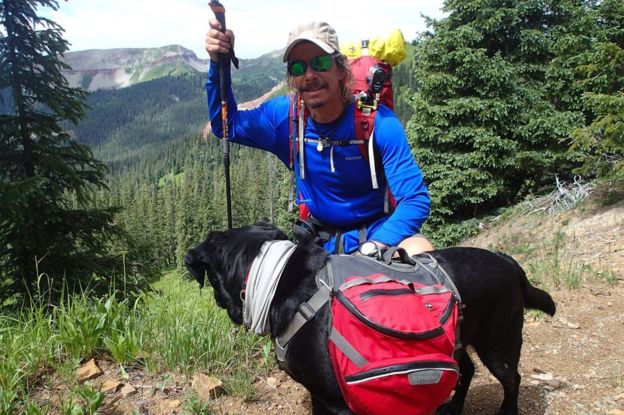His adventures are inspiring, as is his determination to do things as normally as possible. He simply sets himself up, plans his route and – as a special needs person –he goes after what he wants to master.
“Hiking alone seemed to give me some control,” he says, “and having to teach myself, though frustrating at times gave me the self-reliance that I so desperately needed.
“I was able to take ownership of my successes and learn from my failures. I hated the way society viewed me as a blind person and could not accept the lessened expectations that were placed on me, so I decided early on, that however I was expected to exist as a blind person, I was going to be different.“Had I waited for my anger to subside, I feel that things would be dramatically different for me. I fear that I would be yet another blind person, who society had convinced that blindness is a life-ending condition and any hopes and dreams I had left would have been quashed.”
One day, while shopping in a camping store for a sturdier alternative to a white cane for forging through rough country, Thomas met a teenager who had just completed the Appalachian Trail. The AT, as it is known, stretches some 2,180 miles (3508 km) through the Appalachian mountains on the eastern edge of North America. Beginning in Georgia in the south and ending in Maine in the north, it takes in 14 states along the way.
The teenager was brimful of his adventures – how he'd nearly frozen to death, had got up close to a bear – and had a deep sense of achievement for getting through and finishing. Thomas left the store with some trekking poles and the resolve to conquer the AT himself, and to do it solo.
He quickly, however, discovered that there were no resources available for a blind person. There were no tactile maps he might interpret with his fingers, no guides in Braille or in audio form at that time. He also knew that GPS was not accurate enough for a blind person to be able to pinpoint exactly where they were.
Thomas sat down with the same young adventurer he'd met at the camping store, and together they painstakingly mapped the trail. Thomas was given simple instructions of the route he would take on a daily basis. These were then entered into his smartphone, which read the information back out to him when he needed it.
It took 18 months to train and prepare for the trek, and in 2006, he set off. He wasn't too worried about the possibility of being alone for long periods of time.
“I knew that if I found myself in real trouble, all I had to do was sit by the trail and wait. Eventually someone would come along,” he says.
We love this man’s attitude, how doing all he does, taking on nature and the elements – is his life’s work. And it is also interesting to read how he trained his much admired dog, his eyes to the world, one extraordinary asset to an already incredible individual.
You can read more about this man, his life and his foundation over on BBC News.
